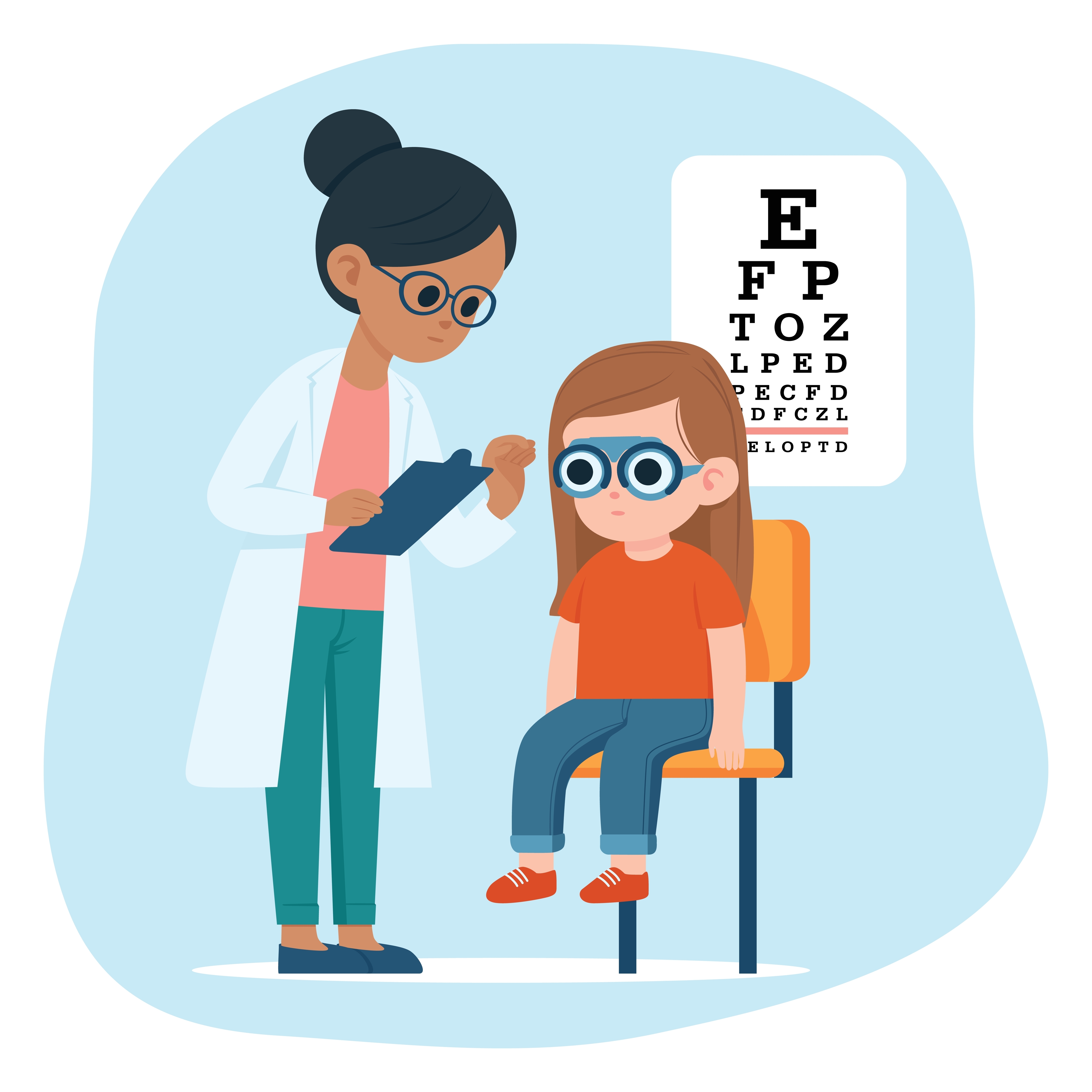
As parents, we keep track of so many aspects of our children’s health—doctor visits, dental checkups, nutritious meals, and plenty of exercise. But one thing that often gets overlooked is their vision. Good eyesight is essential for a child’s learning, development, and confidence, yet many vision problems go undetected because children don’t always realize when they’re not seeing clearly.
Regular pediatric eye exams are the best way to ensure your child’s vision is on track. Even if they aren’t complaining about blurry vision, annual eye exams are essential for catching issues early before they start affecting school performance, sports, or daily life.
The Role of Vision in Childhood Development
Vision isn’t just about seeing clearly—it’s about how children interact with the world. From the moment they’re born, their eyes are learning to focus, track movement, and interpret visual information. As they grow, their eyesight continues to develop, influencing everything from hand-eye coordination to reading comprehension.
Children don’t always recognize when something is wrong with their vision. They assume that what they see is normal because they don’t have a point of comparison. Routine pediatric eye exams are critical—they help identify and address issues like nearsightedness, farsightedness, astigmatism, or even conditions like amblyopia (lazy eye) and strabismus (eye misalignment) before they become bigger concerns.
How Often Should Your Child Have an Eye Exam?
The American Optometric Association (AOA) recommends the following schedule for pediatric eye exams:
• Infant (First Exam) – Between 6 and 12 months old
• Preschool (Second Exam) – At least once between ages 3 and 5
• School-Age (Ongoing Exams) – Annually from age 6 through adulthood
Annual eye exams are especially important once a child starts school. Learning is about 80 percent visual, meaning even slight vision problems can lead to struggles with reading, writing, and concentration.
Signs Your Child May Need an Eye Exam Sooner
While annual exams are the gold standard, there are some signs that your child may need an appointment sooner:
• Frequent squinting or eye rubbing
• Holding books or screens too close
• Complaints of headaches or tired eyes
• Difficulty following text while reading
• One eye turning inward or outward
• Trouble with depth perception or coordination in sports
Even if your child isn’t showing these symptoms, don’t assume their vision is fine—many issues go undetected without a comprehensive exam.
What to Expect During a Pediatric Eye Exam
A pediatric eye exam at Eye Rx is far more than a quick vision screening. Unlike the basic tests performed at schools or pediatrician offices, our exams take a deeper look at your child’s visual health.
During the exam, we assess:
• Visual acuity (how well they see at various distances)
• Eye tracking and coordination
• Depth perception and focusing ability
• Overall eye health to check for early signs of disease
The goal is to ensure that your child’s eyes are not only seeing well but also working together efficiently, because vision is more than just 20/20 eyesight.
Schedule Your Child’s Eye Exam with Eye Rx Today
Annual pediatric eye exams aren’t just a precaution—they’re an investment in your child’s future. Clear vision sets them up for success in school, sports, and everyday life. The earlier we catch potential issues, the easier they are to correct.
At Eye Rx, we are dedicated to helping your child see their world clearly and comfortably. Schedule your child’s next eye exam and give them the advantage of healthy vision for life. Visit our offices in Washington, DC (202) 659-2010, Chevy Chase, Maryland (301) 450-8300, Arlington (703) 553-1094 or Dumfries (571) 404-0188, Virginia.







